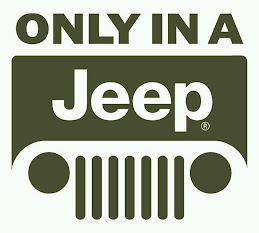- replace FUEL FILTER
- HIDDEN SNORKEL located at air cleaner
- tune up engine for finer performance
Grasp the transfer case shifter on your Jeep and shift from two-wheel drive to four-wheel drive high range by pulling straight back on the shifter from "2H" to "4H." This shift can be made at any speed less than 55 miles per hour, without stopping. The case will shift easier if you ease off the throttle as you move the lever.
- Step2
Slow the vehicle to two or three miles per hour if you must shift the transfer case to four-wheel drive low range. Shift you transmission to neutral then grasp the transfer case shifter. With the Jeep still coasting, shift the transfer case quickly from "4H" into "N" and from "N" into the "4L" position.
- Step3
Shift the transmission back into gear and slowly accelerate. Do not drive your Jeep over 25 miles per hour in low range, or you will damage the transfer case. Shifting back up through the gears is the reverse of the procedure in the preceding steps.














